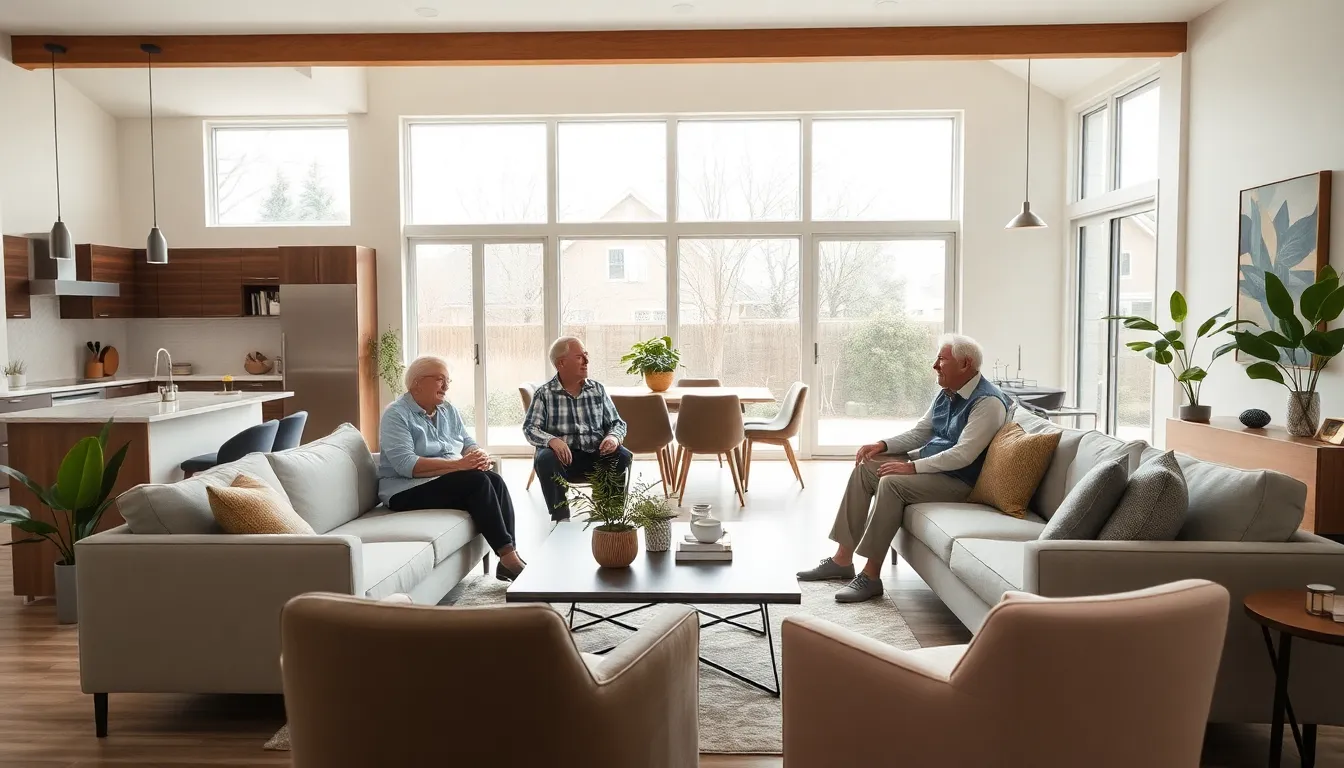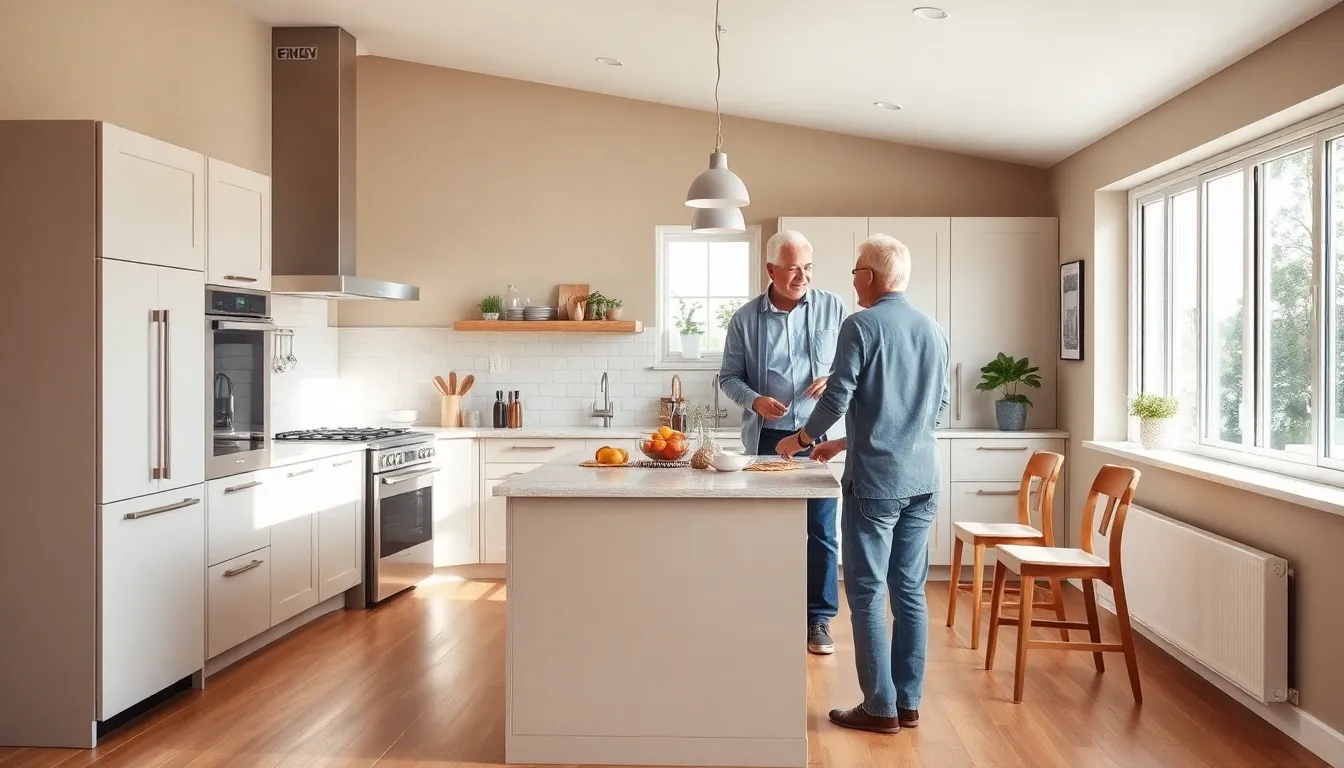As retirement approaches, many find themselves dreaming not just of endless vacations and leisurely mornings but of a home that truly reflects this exciting new chapter. Home remodeling for retirement is more than just a trend: it’s an opportunity to create a comfortable sanctuary tailored to one’s evolving needs. It’s time to trade those cramped spaces and outdated designs for an oasis of functionality and style. Whether you’re aiming for safety, energy efficiency, or sustainability, this guide offers insights to help turn your home into the perfect haven for your golden years. Let’s immerse, shall we?
Table of Contents
ToggleUnderstanding The Needs Of Retirees

As habits and priorities shift in retirement, so too do the demands on one’s living space. Retirees often seek a home that allows for greater comfort and ease of living. This means understanding what truly matters in a residential setting. Age-friendly design is paramount. Retirees should consider factors like reduced maintenance, ease of navigation, and spaces that foster social interaction.
Also, it is crucial to recognize that retirement doesn’t mean hibernation: many retirees want to stay active and engaged with family and friends. Gathering spaces need to be inviting and functional, facilitating both rest and recreation. Think open layouts that encourage conversation and connection.
Creating A Comfortable Living Environment
A comfortable living environment goes beyond aesthetics: it encompasses safety and accessibility, ensuring that one can enjoy their home without worry.
Safety Features To Consider
One of the primary concerns in home remodeling for retirement is safety. Incorporating features like non-slip flooring, grab bars in bathrooms, and improved lighting can dramatically decrease the risk of accidents. Consider adjustable furniture that can be tailored to various tasks and activities, such as sitting or standing. Ensuring that smoke detectors and carbon monoxide alarms are easily accessible can add another layer of protection.
Accessibility Modifications
Accessibility modifications are essential for fostering independence. This might involve widening doorways for wheelchair access or installing stairlifts for homes with multiple levels. Open floor designs can further enhance movement throughout the space, reducing obstacles that may become troublesome later. Garages or entrances could be reimagined to feature zero-step entries, letting homeowners effortlessly glide in with groceries or equipment.
Energy Efficiency Upgrades
Energy efficiency is not just a buzzword: it’s a wise investment that pays off in both savings and comfort. Remodeling with an eye toward energy efficiency can significantly lower utility bills, a boon for retirees on a fixed income.
Cost Considerations For Remodeling
When planning for energy-efficient upgrades, costs can vary widely based on initial investment versus long-term savings. Upgrades like high-efficiency windows, energy-saving appliances, and improved insulation may have a considerable upfront cost but can lead to savings over time. It’s crucial to consider tax incentives and rebates that may apply to these projects, making the transition much smoother.
Budgeting Tips For Retirement Remodels
Creating a realistic budget for remodeling is essential. Start by prioritizing the most impactful changes, such as those that enhance safety or comfort. Seeking bidding from multiple contractors can flush out the best deals. Retirees might also want to allocate a portion of their budget to unexpected expenses: after all, remodeling often reveals hidden surprises, especially in older homes.
Choosing The Right Professionals
Navigating the world of home remodeling can be daunting, but choosing the right professionals can make the process seamless. It’s advisable to look for contractors who specialize in homes for seniors or who have experience with universal design. These experts understand the specific needs retirees have in home functionality and can provide valuable insights throughout the project.
Planning For Future Needs
Planning for the future is key. It’s not just about today’s needs: it’s crucial to anticipate how those needs may evolve. Engaging with professionals who provide insights into aging-in-place solutions can offer design ideas that allow a home to adapt as life circumstances change.
Sustainability In Home Design
Sustainability should be at the forefront of home remodeling discussions, especially since many retirees increasingly prioritize eco-friendly living. It’s not only good for the planet: energy-efficient homes can yield significant savings on monthly bills as well. Using sustainable materials, maximizing natural light, and investing in solar panels are excellent ways to ensure a home not only feels good but is good for the environment.
Retirees can tie in elements like native landscaping, which is not only beautiful but requires less maintenance, aligning with the new lifestyle of ease and freedom.


